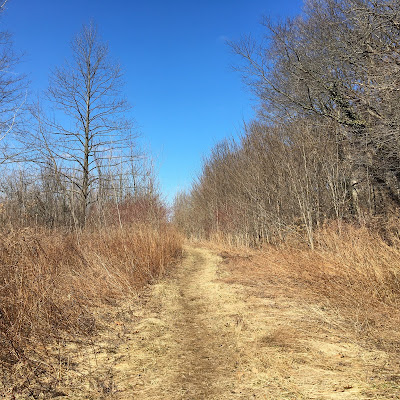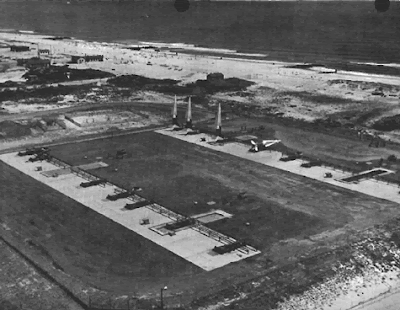 |
Course map.
|
In May 2019 my brother Eric and I attempted to run an ultramarathon - a 50-mile trail run through Bear Mountain State Park. Organized by The North Face, the race contained cut-off checkpoints which racers must meet in time. With about 9 miles from the finish line, we came in too late at the last checkpoint and were forced to stop. I had fallen asleep standing up. Eric’s feet had stress fractures. We ran 41 miles.
Back in 2018, I began running the trails at Alley Pond Park in the mornings before work, with newfound energy thanks to a plant-based diet. I ran my first 10k that year. The allure of an ultramarathon had already hooked us. Eric ran a 35-mile race along the Shawangunk Ridge. By the beginning of 2019, we had a training plan in place to tackle our first 50-miler.
We ran as much as we could. During the week, I ran laps at nearby parks in Brooklyn. I'd get up at 5am and run for 30-45 minutes then commute to work. Eric and I would meet on the weekends at Alley Pond Park and run longer distances. We ran through snow and ice in the winter months, heat and mosquitos in the warmer months. We spent countless hours running laps. Soon we were running distances that seemed impossible to reach before: 10 miles, 15 miles, and finally our first marathon. Prior to the race, we had two training runs along the race course in Bear Mountain, each a marathon distance.
No music or podcasts to keep ourselves occupied. We knew this race would test us. I became familiar with my angels and demons and learned to use them to my advantage and how to block them out. Starting any run was always the hardest part. Once I started, all my thoughts and anxieties quieted and I'd settle into a rhythm and the miles melted away.
The night before the race, Eric and I slept in the back of my Honda Element in the parking lot of Anthony Wayne Recreation Area. On Saturday May 4th, we woke up at 3:30 am and got ourselves together for the 5:00 am race start time. A school bus shuttled runners from the parking lot to the start/finish line located near the Bear Mountain Inn. I wasn't nervous or anxious - I just wanted to start running. I wasn’t thinking about the finish line. Our plan was just to make it to the first cut-off checkpoint in time, around mile 20.
We ran the first hour or so in the dark with our headlamps. This was a difficult section because the trail was narrow and all the runners were packed together. The course was muddy from recent rains. My headlamp was completely inadequate for running in the dark but I managed.
We passed the first two aid stations, at miles 4 and 8, without stopping. The next section was difficult with rocky trails and steep ridge climbs. My pace was way too quick but I felt strong. We took a short break at aid station #3 (mile 14.2) and after loading up on drinks and food, we got back out on the course.
We were hustling from aid station #3 to aid station #4 (mile 19.8) to make the first cut-off checkpoint in time. We weren't familiar with this section of trail from our training. We made it to the checkpoint in time but our pace was exhausting. I had trouble filling my water bladder at the aid station. A volunteer asked if I was ok. I shrugged it off.
 |
Time checkpoints.
|
Somewhere between aid station #4 and #5, I stopped to relieve myself and almost fell over. It didn't occur to me until later that I must've fallen asleep. While I was running, I noticed that I was also nodding off. This happened once or twice before I realized that I
really needed to eat more.
I was bonking - running out of energy. I was able to stay hydrated but after running so many miles I really didn't want to eat anything. But I
had to eat. I hadn't experienced this kind of energy depletion in training and had to figure it out while racing. I stuffed my pockets with bananas and potatoes and kept munching on them every few minutes, forcing myself to eat. Soon I felt better but I wasn’t in great shape from here on out.
Eric and I were mostly together until the first cut-off checkpoint but then I fell behind and we separated. I remember a man running past me and he said to keep going, don’t give up. Suddenly my legs found some hidden energy and I began moving a little quicker. I wasn't ready to give up just yet so I kept putting one foot in front of the next.
I was alone, struggling and coming up on the second cut-off checkpoint (mile 29). I was at the back of the pack. Other runners were also struggling and getting injured. I wasn't sure if I was keeping pace to make the cut-off. I wasn't ready to give up but I left the rest up to fate. If I made the cut-off I would continue. Eric was waiting for me at the cut-off checkpoint (mile 29). Seeing him gave me such a lift. I made it to the checkpoint in time. We continued together but I couldn't match his pace and soon fell behind again.
I was beyond physical pain now. My legs felt numb. The only question in mind was 'Are you going to stop?' It seemed that every minute, for hours, the question of quitting kept popping into my mind and I continued to say 'No'. Nothing else mattered except moving and eating. I had nothing left in the gas tank and had to will myself over climbs.
Eric was waiting when I made it to aid station #8 (mile 35.2). I drank some much needed vegetable broth which gave me nutrients as well as hydration. We separated once more and I returned to my shuffle - I could barely manage a run but I had to keep moving.
I reached the last aid station (mile 38.6) before the final cut-off checkpoint. I had been running by myself for a long time, struggling to keep moving, but somehow I didn’t give up. The aid station volunteers informed me that I'd have to run 2.6 miles in 28 minutes in order to make the next cut-off. I started down the path. I was familiar with this stretch of trail having hiked it several times. I knew that the terrain was not difficult but I just couldn’t bring myself to go any faster. My pace was more of a quick walk than a run. When I crossed the bridge and came into the Anthony Wayne area, I was shocked to see that Eric also hadn't made the 4:23 pm cutoff. Our race was over. We had been running for 11 hours and a total of 41 miles.
I collapsed in the back of my car and just sat there. I didn’t have energy to talk. I endured longer than I thought I could. My feet and legs were destroyed but I believe we could have continued to the finish even if it took all night. Fortunately for us, though, the race made the decision for us and we were eliminated.
I laugh thinking back to the strange sort of existence I experienced during this race; running long miles alone through woods I can hardly remember, my mind constantly testing my will to finish, looking for vulnerabilities. Where did the time go? My entire universe was running and eating. After all my energy was gone and my legs were numb, I thought about people enduring real pain and suffering and how I couldn’t even make it up a hill. I used these thoughts and emotions for short bursts of energy, while more positive thoughts, like gratitude, offered more sustained energy.
Over the two years since the race, running has taken a backseat to other things in my life, but when I really need to get outside and clear my head, I run. I know the amount of work it will take to run another ultramarathon and I have no doubts about attempting another someday. But next time, maybe just a marathon before another 50 miles.
Thank you to my brother Eric for running with me and to my family and friends for their love and support.

























